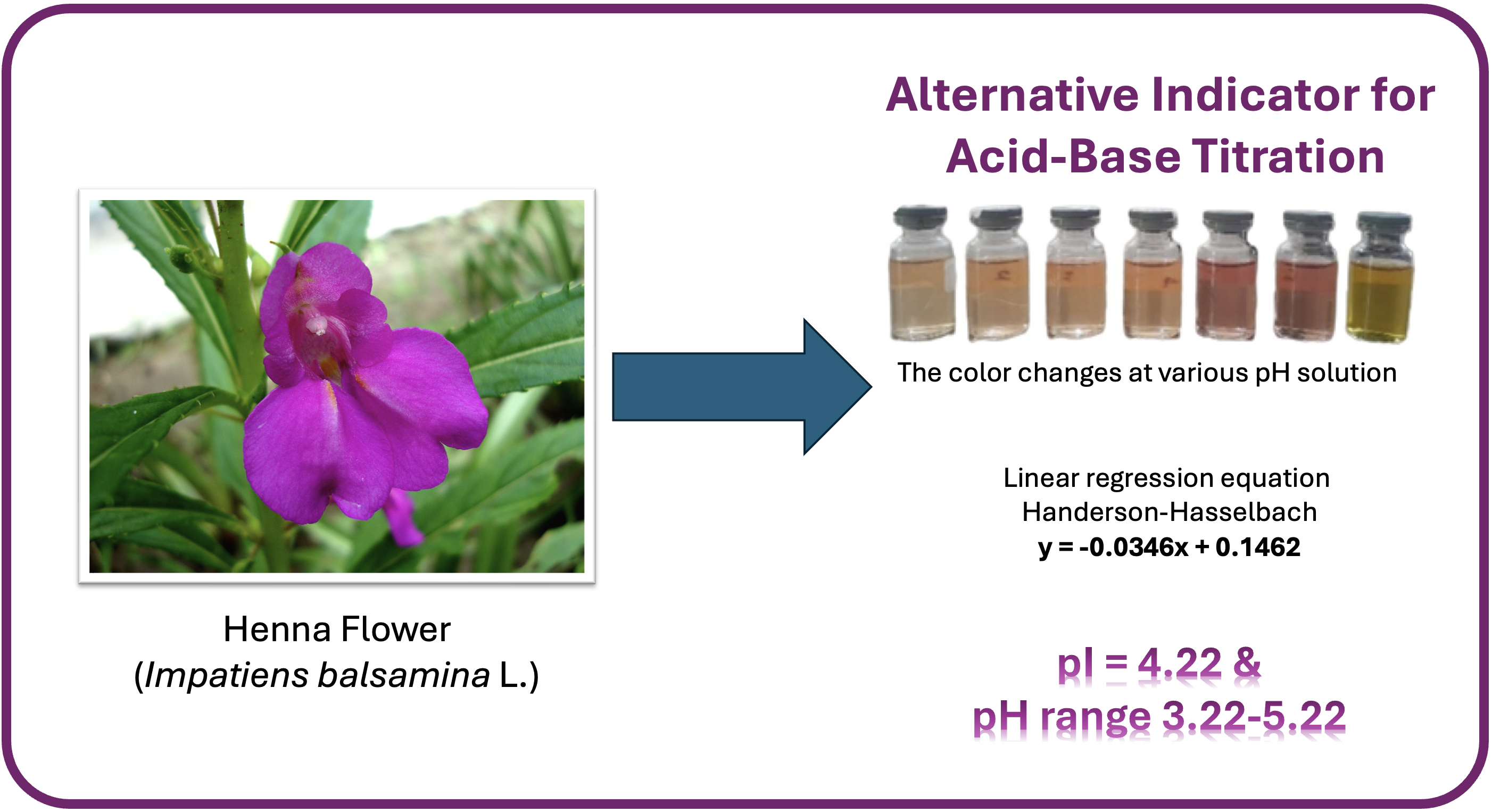Exploring Water Henna Flower (Impatiens balsamina L.) Pigment as an Alternative Indicator for Acid-Base Titration
Abstract
Acid-base titration is a common technique used in quantitative analysis in laboratories, with the indicator playing a crucial role in the process. However, synthetic indicators are often costly and can contribute to environmental pollution. As a result, there is a need for alternative, natural acid-base indicators that are affordable and easily accessible. One potential natural indicator is anthocyanin, a pigment found in plants. This study aims to develop an alternative acid-base indicator from the anthocyanin extract of water henna flowers and evaluate its performance in acid-base titrations. The process involved preparing the water henna flower extract, determining its dissociation constant (pI), and testing its effectiveness in acid-base titrations. The pI was found to be 4.22, and the extract exhibited a color change within the pH range of 3.22-5.22, making it suitable for use in acid-base titrations. The water henna flower extract successfully showed clear color transitions at the endpoint of base titrations and provided results comparable to those obtained using methyl orange, accurately determining HCl concentration and sodium bicarbonate levels. This suggests that water henna flower extract can be used as a cost-effective, easily prepared, and environmentally friendly alternative to synthetic indicators like methyl orange.






















